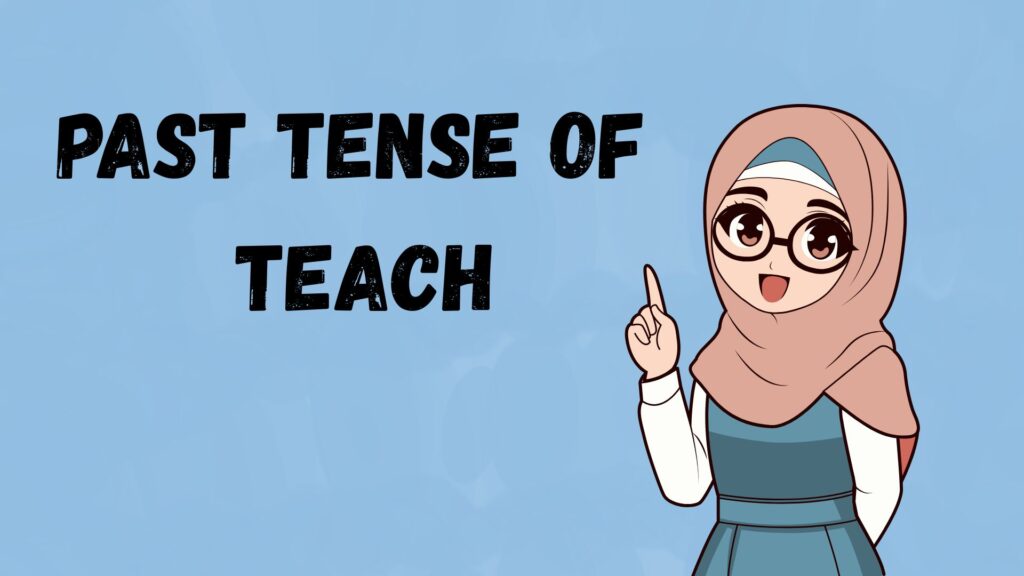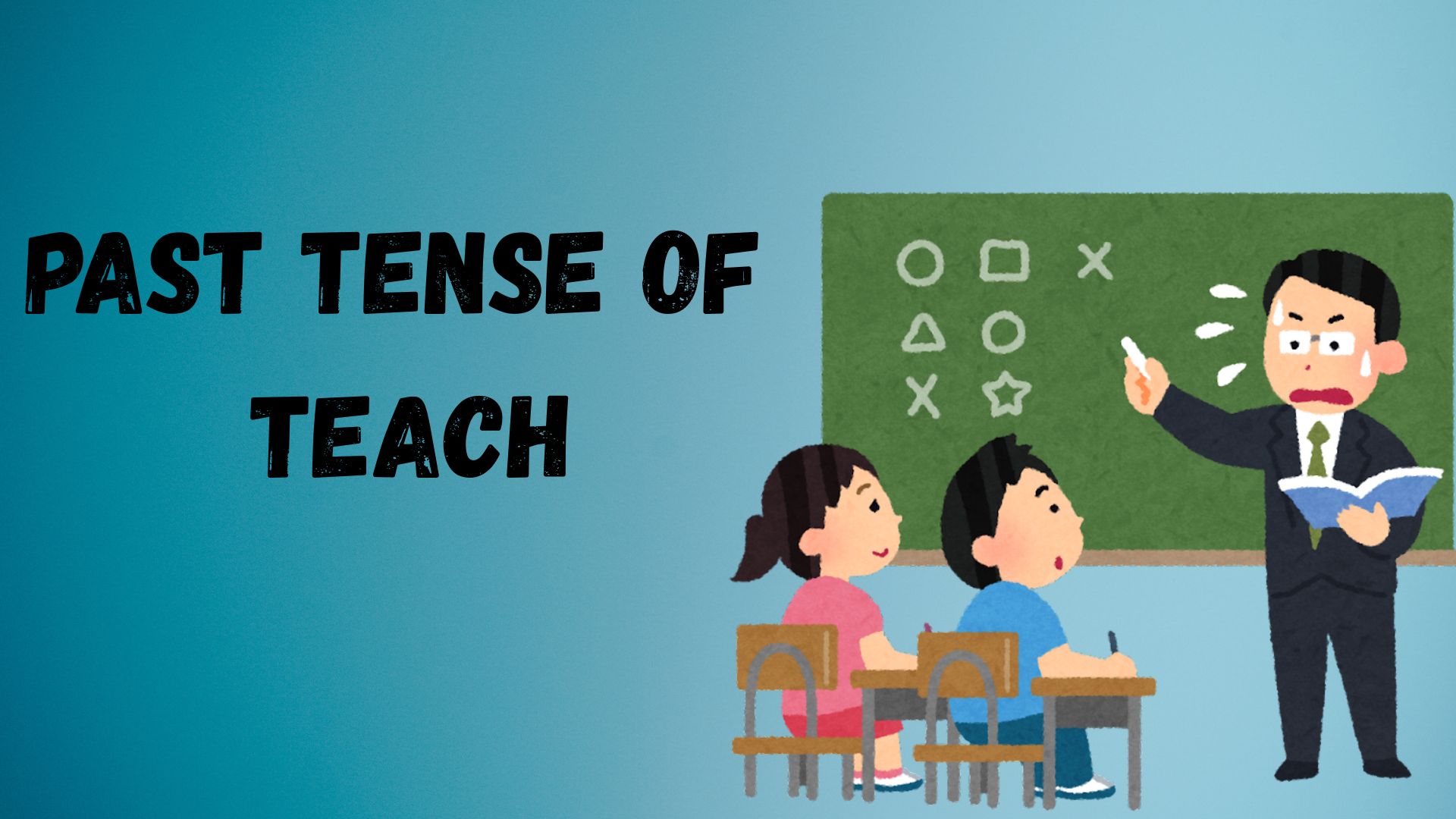We use the verb “teach” all the time in schools, at home, at work. But what happens when we talk about it in the past tense? The answer is “taught.” That’s right, not teached.
Let’s break down why that is, explore its grammar rules, look at common mistakes, and learn through real examples, idioms, and even a little history.
The Correct Past Tense of Teach Is “Taught”

Let’s say it clearly:
🟩 “Taught” is the correct past tense and past participle form of “teach.”
❌ “Teached” is not standard English and should be avoided.
So, you don’t say:
“I teached my brother how to play chess.” ❌
Instead, say:
“I taught my brother how to play chess.” ✅
The word “teach” is an irregular verb, which means it doesn’t follow the standard “-ed” pattern like walk → walked or play → played.
Real-Life Examples Using “Taught”
Let’s put “taught” into some real-world contexts. These are situations you might face every day.
📧 Example 1: Email from a Tutor to a Parent
Subject: Update on Sophia’s Progress
Dear Mrs. Thomas,
I taught Sophia how to simplify algebraic expressions in today’s session. She caught on quickly and even helped another student with the same concept.
We’ll continue building on this next week.
Best regards,
Mr. Grant
💬 Example 2: Text Message Between Friends
Greg: Hey, didn’t you say your dad taught you how to use a blowpipe when you were a kid?
Sam: Yep! Took me forever to get the aim right though 😅
📝 Example 3: College Essay Snippet
“My mom and dad both taught me valuable lessons about resilience, but in very different ways. Mom taught by example; Dad, through storytelling.”
Why Not “Teached”?

Here’s where many learners stumble. Since most English verbs form their past tense by adding -ed, it’s easy to assume that teach → teached makes sense.
But not in this case.
🔎 Let’s look at the verb conjugation:
| Tense | Verb Form |
|---|---|
| Present Tense | teach |
| Past Tense | taught |
| Past Participle | taught |
| Present Participle | teaching |
Because it’s irregular, we have to memorize its forms.
The Role of Auxiliary Verbs in Past Tense
Sometimes, we pair “taught” with auxiliary verbs like:
- Have/Has → She has taught for over 20 years.
- Had → They had taught themselves before school even started.
- Was → He was taught by a private tutor.
These helper verbs shape the perfect tenses and passive voice, so understanding them is key.
Examples Using Auxiliary Verbs
📧 Email from a Manager:
Subject: Leadership Workshop Follow-Up
Hi Team,
Thanks for attending the workshop last Friday. Michelle has taught this module over 40 times, and your feedback confirms she delivered once again.
We’ll be applying these techniques in next week’s meeting.
Best,
Jonas
👨🏫 Passive Voice Example:
“The children were taught the basics of photo editing by the art instructor.”
Here, “were taught” is the passive form, with was/were acting as the auxiliary verbs.
Let’s Talk Idioms with “Teach”
English is full of idiomatic expressions using “teach.” These often use the past tense form “taught” or rely on the verb in creative ways.
Here are a few gems:
| Idiom | Meaning |
|---|---|
| To teach an old dog new tricks | Trying to change someone’s habits, often unsuccessfully |
| Failure teaches success | Mistakes can be valuable learning tools |
| To teach someone the tricks of the trade | Show them expert techniques |
| To teach a man to fish | Give lasting knowledge instead of a temporary solution |
| Don’t try to teach Grandma how to suck eggs | Don’t give advice to someone who already knows more than you |
| Those who can, do; those who can’t, teach | (Cynical) suggests teaching is second-best |
Historical Origins of “Teach” and “Taught”
Ever wondered where “taught” comes from?
It all starts with Old English “tæcan”, meaning to show, instruct. That, in turn, evolved from **Proto-Germanic *taikijan, linked to the **Proto-Indo-European (PIE) root *deik, which meant to point out or show.
It’s also related to:
- Old High German: zihan
- Old English nouns: tacen, tacn (meaning a sign or token)
So, teaching was originally tied to “showing” or “demonstrating.” That makes sense, right?
Taught vs. Teached: Clearing Up the Confusion

Let’s summarize the differences:
| Form | Status | Example |
|---|---|---|
| Taught | ✅ Correct | “He taught me how to edit videos.” |
| Teached | ❌ Incorrect | “He teached me how to edit videos.” |
If you see “teached” in a sentence, it’s either:
- A mistake
- A child’s speech
- Or a joke/reference to nonstandard dialects
Examples That Stick
Want to remember how to use “taught” naturally? Try these examples on for size:
- My mentor taught me everything I know about leadership.
- The YouTube tutorial taught me how to fix my laptop.
- They taught their parrot to say ‘good morning.’
- I was taught by one of the best math tutors in town.
- He had taught at the elementary school before becoming a principal.
Teach vs. Learn: Don’t Mix Them Up
Another classic mistake is confusing teach with learn. Remember:
- You teach someone something.
- You learn something from someone.
❌ “He learned me how to code.”
✅ “He taught me how to code.”
📚 Final Grammar Lesson
- Teach is the base verb
- Taught is both the past tense and past participle
- Teached is nonstandard and should be avoided
- Irregular verbs must be memorized; they don’t follow the -ed pattern
- Auxiliary verbs like have, had, was shape compound tenses
- Idioms and expressions keep the language colorful and rich
✅ Quick Recap Table
| Verb | Present | Past Tense | Past Participle |
|---|---|---|---|
| Teach | teach | taught | taught |
| Learn | learn | learned | learned (or learnt in UK English) |
| Show | show | showed | shown |
🎯 Key Takeaways
- “Taught” is the only correct past tense form of “teach.”
- Avoid using “teached.”
- Use “taught” with auxiliary verbs for perfect and passive constructions.
- Context-rich examples, idioms, and historic roots help you internalize the rule.
- Teach grammar well, and you won’t have to relearn it later.
If you enjoyed this breakdown, don’t forget to check out more grammar lessons, writing tips, and example-rich guides in our upcoming posts. Mastering verbs like teach/taught lays the foundation for more advanced English skills.

